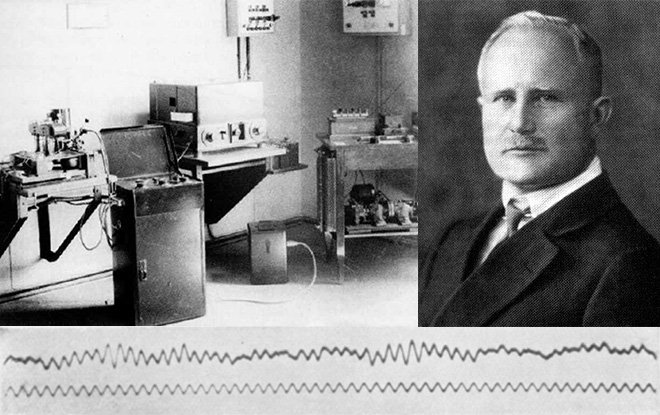The psychiatrist who managed to record the bioelectrical activity of the human brain: Who is Hans Berger?
Witnessing all the suffering of the Hitler era and World War II, Hans Berger committed suicide on 1 June 1941 in Bad Blankenburg, Thuringia, as a result of a fit of melancholy.

(1873-1941) German psychiatrist. By succeeding in recording the bioelectrical activity of the human brain, he laid the foundation for electroencephalography. He was born on May 21, 1873, in Neuses, near Coburg, Bavaria. He was the son of a doctor father and a mother who was particularly keen on reading about the "soul and body relationship". Hans Berger, who changed the name "Johannes" given by his family to "Hans" when he became an adult, was planning to study astronomy after graduating from Coburg High School. However, an interesting event he experienced during his military service changed Hans Berger's plans for the future and gave a new direction to his scientific life. He had a feeling that he was in danger, alarming the family. Upon this event, Hans Berger gave up astronomy and turned to psychiatry and started his education at the University of Jena in 1892. In those years, Freud's "dream interpretations" aroused wide interest not only in the scientific community but also among the public.
Hans Berger (21 May 1873 – 1 June 1941) was a German psychiatrist. He is best known as the inventor of electroencephalography (EEG) in 1924, which is a method used for recording the electrical activity of the brain, commonly described in terms of brainwaves, and as the discoverer of the alpha wave rhythm which is a type of brainwave. Alpha waves have been eponymously referred to as the "Berger wave."
Hans Berger, who received his doctorate from the University of Jena in 1897 and started to work in the psychiatry clinic of the same university in 1900, was appointed to the professorship in 1906, to the head of the psychiatry department in 1919, to the rectorate in 1927, and was awarded the title of "Emeritus Professor" in 1935. Witnessing all the suffering of the Hitler era and World War II, Hans Berger committed suicide on 1 June 1941 in Bad Blankenburg, Thuringia, as a result of a fit of melancholy.
Hans Berger, who focused on the objective basis of psychiatry cases in his studies, made valuable studies on blood circulation in the brain, bodily indicators of mental states, and brain temperature. However, in neuropsychiatry, Hans Berger's name is associated with the method he developed to record the bioelectrical activity of the human brain.
The research on the electric potential (bioelectricity) in living things started in the 18th century. At that time, the English physician John Walsh (1725-1795) and Galvani took the first step by proving the existence of electrical impulses from the motor nerves to the muscles, and in 1875, an English neurosurgeon named A Richard Caton (1842-1926) opened the skull of the animal brain. had succeeded in recording its bioelectrical activity.
Hans Berger hoped that the electrical activity (brain waves) of the cerebral cortex could be recorded on the scalp without opening the skull and that this activity, which he assumed would reflect the state of consciousness of the human, could be used as a physical tool in transferring thought to the brain. After a series of unsuccessful experiments with very low-sensitivity electric vehicles, on July 6, 1924, he was able to receive signals from metal electrodes placed on his son Klaus's head. Hans Berger, who published this first positive result and the following observations in 1929, determined that when the subject opened his eyes, the rhythm in the electroencephalography (EEG) changed immediately, and the intellectual actions such as solving the arithmetic problem caused the same change. These observations were the findings that formed the basis of EEG, which will become one of the most important research and diagnostic methods in neurology in the future. However, Berger's invention was not taken very seriously in those years and was even ridiculed in some circles. In particular, the psychiatry circles dominated by the Freudian approach accused Berger of narrow-mindedness. But when the repercussions of this work crossed the borders of Germany a few years later, the issue suddenly became important. At the Psychology Congress convened in Paris in 1937, Adrian and Berger's joint statement on the electrical activity of the nervous system was met with great enthusiasm and Hans Berger was applauded as one of the greatest psychiatrists of his time.
Hans Berger, who started his career during the rise of Freud, is considered the pioneer of a new branch of science such as psychophysiology, although he was inevitably influenced by Freud. His EEG method, while giving a great impetus to neurophysiology research, has also become an indispensable complete tool that penetrates even the smallest units of clinical neurology.
